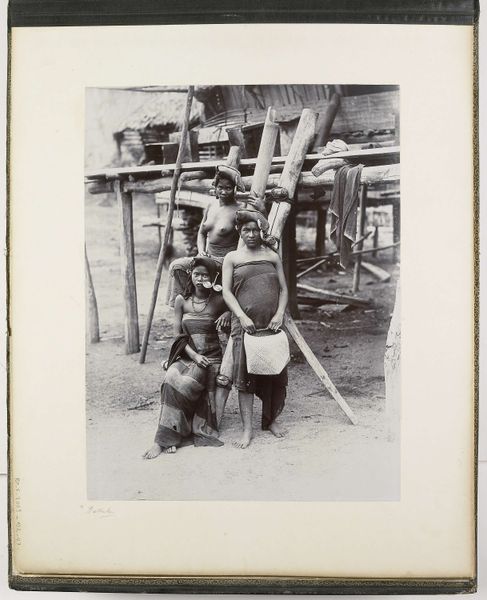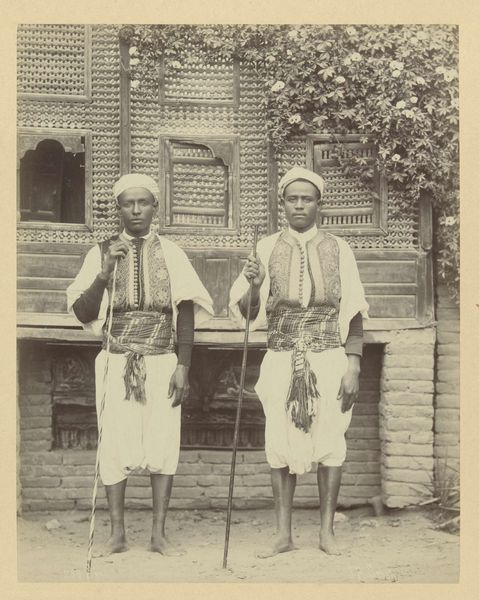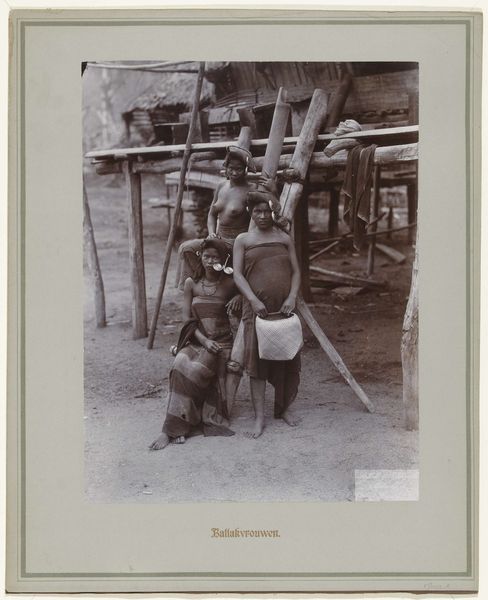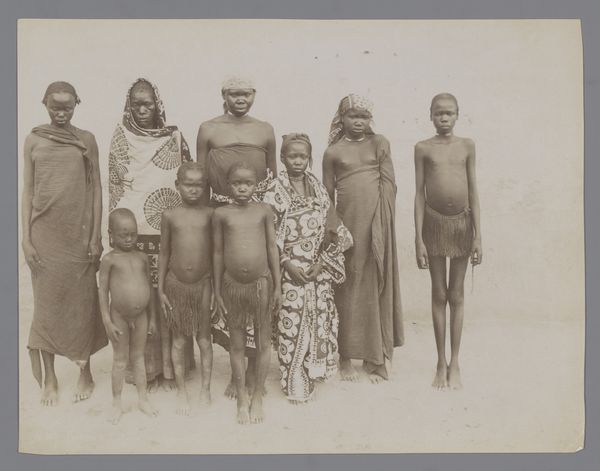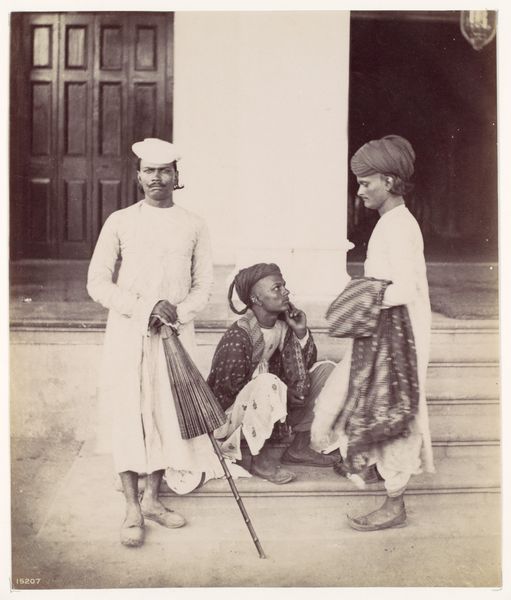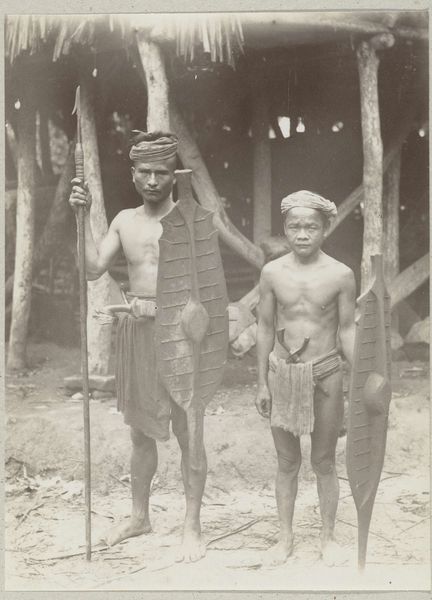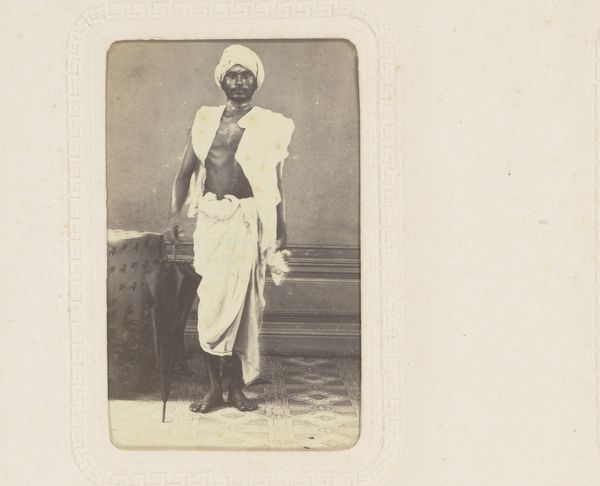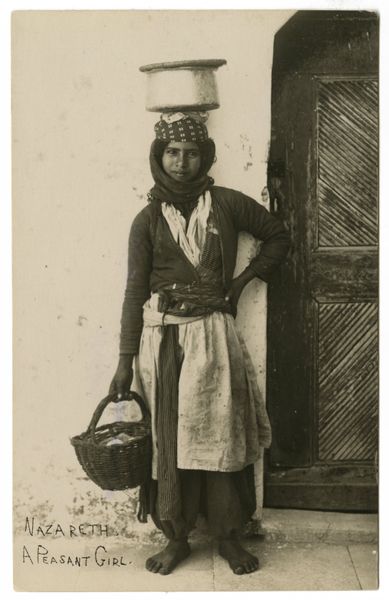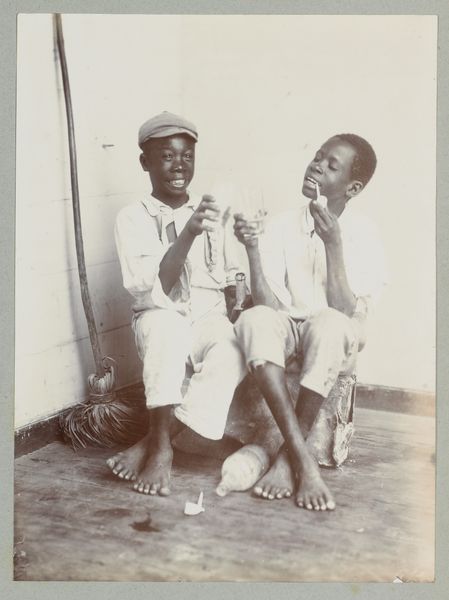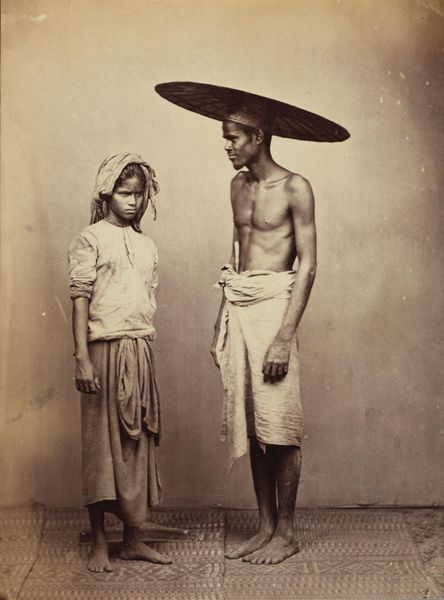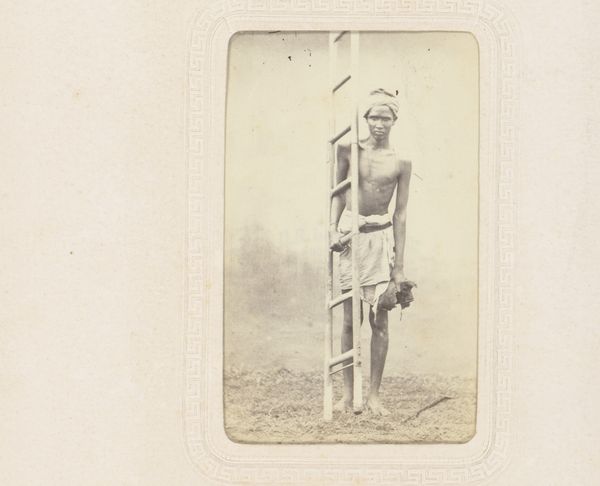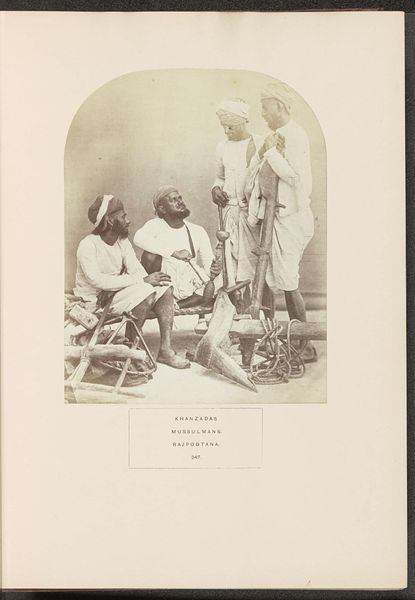
photography
#
portrait
#
african-art
#
narrative-art
#
street-photography
#
photography
#
realism
Dimensions: height 135 mm, width 90 mm
Copyright: Rijks Museum: Open Domain
Curator: Here we have an arresting photograph entitled "Blinde bedelaar met zijn begeleider," or "Blind Beggar with His Companion." The details around its making are somewhat scant, though we believe it was created somewhere between 1900 and 1910. Editor: Oof. Stark, isn't it? All shadows and angles. That poor kid—the way he's holding his foot…and that look in his eyes just claws at you. It's the kind of shot that makes you stop dead in your tracks. Curator: Indeed. What we can infer is that the photographic realism, juxtaposed with its narrative elements, lends to a potent scene rife with implied social commentary. Observe how the artist employs tonal contrast to further amplify the subjects' physical and, arguably, emotional destitution. Editor: It's like...you want to reach out and offer them a warm drink. It makes you think about what their daily life must have been like back then in the 1900s. Survival mode constantly engaged... But even the composition--the kid taking centre stage despite being the support character of the beggar, it just shouts something poetic, though sadly so. Curator: Precisely. Also, do take note of the subjects' traditional garb and postures; there's an element of intentionality that goes beyond mere documentation. And I suspect influences by other non-western traditions that at the time were becoming more widely accessible. This aesthetic consideration of human subjects reflects perhaps a nuanced, cross-cultural sensibility of the turn-of-the-century artists. Editor: I think for me, this particular one lingers not just in its form, or technique, but how deeply the scene impacts you; you know. It's rough, beautiful, devastating...almost dream-like even. Curator: It’s certainly an excellent example of narrative artwork as seen through the photographic lens; each angle of light and shadow appears meticulously considered and placed with significant intent. Editor: Absolutely. Art's at its best, I feel, when it leaves you shaken...makes you examine things.
Comments
No comments
Be the first to comment and join the conversation on the ultimate creative platform.
